|
|
WELCOME TO TRANS ODYSSEY!

The Official
Website
Book Online Now
Your Tailored
Tour-Around Destinies in Iskandar Malaysia, State of Johor & mainland Peninsular Malaysia -
Travel, Explore, Discover, Learn and Enjoy
Octave Dynamics
The
understanding of Trans Odyssey is about the Octave
Dynamics of the zarooarian octave in this country beyond
traditional paradigms and through the lens of Real World
Views, which is a non-traditional paradigm, and a
"Views from the Real World" that is position on the
intersection of the our three world experience - that
is, on Our Third World moments, an intersection area
between Our Outer World moments and Our Inner World
moments, if we have the
WORK on our self. Trans Odyssey itself is about
reciprocal nourishment from collective conscious
self-remembering WORK of conscious labors and
intentional suffering through conscious collective self-observation and
conscious collective objective participation in the
enjoying odyssey in contradistinction to the reciprocal extractive, exploitative
and oppressive mechanicalness of daily activities in the sleep-wake
conscious state of
collective automatons underlying hidden tourism-investment
disguises of a highly commercialized tourism with
deeply hidden motto of money-tourism.
Natural Octave Dynamics of the
zarooaries which had already begun thousands of years
earlier as tribal clans and communities were
occasionally disrupted due to warring tribes and
communities within and without during primitive
communal, slavery and the feudal era.
Feudalistic-essenced
empires such as the Majapahit, the Khmer, the Srivijaya
and the Ayutthaya maritime empires dwelling on World-Island Southeast Asia
of the past. The
greatest disruption including wipe-outs were from the colonialistic- and capitalistic-essenced British Empire
of the Outer Island Crescent or the Western world
conquering and colonizing countries here. Peculiar to
every FA-Historical Sociocosmic Species of Capitalism as it
has to expand its
colonialization reaches far beyond its borders. Therefore, to interprete the
history of the zarooarian octave, like all other
similarly disrupted zarooaran octaves elsewhere in the
world, we have to include typical octave dynamics of restoring
most of these forced settlements (zarooarian seeds) back
to the natural octave dynamics for proper, natural and
sustainable growth.
There are 7 stages
in this dynamics that have the colonialistic-posited 627
forced settlements or zarooarian seeds or New Villages
or 14 other new post-colonial but less obvious
internalized capitalistic-essenced
money-maximization purposed new settlements both in West Malaysia and East Malaysia.
Current Number of Chinese New Villages in
Malaysia
As of April 2024, Malaysia has 627
Chinese New Villages (华人新村). This
follows the addition of 14 newly designated villages in
Sarawak, approved by the Housing and Local Government
Ministry. Prior to this, the count stood at 613 (450 in
Peninsular Malaysia, 113 Kampung
Tersusun, and 44 fishing villages predominantly
inhabited by ethnic Chinese)6812.
Perak remains the state with the highest concentration
of these villages
Historical Background: Common Origins and
Evolution
🔥 Origins
in the Malayan Emergency (1948–1960)
-
Counterinsurgency Strategy: The villages
were created under the Briggs
Plan (1950),
a British military strategy to combat the
communist-led Malayan National Liberation Army
(MNLA). By forcibly relocating rural Chinese
communities—deemed potential supporters of
guerrillas—the British aimed to cut off supplies,
intelligence, and recruits to insurgents1410.
-
Mass Resettlement: Approximately 500,000
people (10%
of Malaya's population) were uprooted, with ethnic
Chinese comprising 80-90% (400,000–450,000 people).
They were interned in 450 fortified camps termed
"New Villages"1410.
⛓️ Living
Conditions and Control Mechanisms
-
Confinement and Surveillance: Villages were
encircled by barbed
wire, with guarded checkpoints enforcing
strict curfews (e.g., 22-hour lockdowns in Tanjong
Malim). Movement was monitored; carrying food like
rice or salt outside was prohibited1210.
-
Harsh Realities: Residents endured
overcrowded wooden barracks, limited amenities, and
economic disruption. Former villagers likened the
experience to "living in a chicken cage" or
"concentration camp"2410.
-
Collective Punishment: Security forces
displayed corpses of suspected communists to
intimidate villagers, fostering an atmosphere of
fear and mutual suspicion24.
🌱 Post-Emergency
Transformation (1960s–Present)
-
From Camps to Communities: After Malaya's
independence (1957), restrictions eased. Villages
evolved into permanent settlements, though economic
challenges persisted due to limited land and
resources710.
-
Demographic Shifts: While initially
homogeneous, some villages diversified. By 1985, 77%
of villages were predominantly Chinese, but 26 were
exclusively Malay (e.g., in Kelantan)7.
-
Socioeconomic Adaptation: Residents shifted
from tin mining and rubber-tapping to aquaculture
(e.g., repurposing mining ponds for fish farms) and
small businesses. Cultural hybridization emerged,
such as Hakka tofu adapting to local ingredients2710.
📊 Key Historical Impacts and Modern
Significance
|
Aspect |
Historical Impact |
Modern Reality (2025) |
|
Population |
470,509 resettled (1950s); 85% ethnic
Chinese110. |
1.2+ million residents; 85%
Chinese, with growing diversity110. |
|
Political Legacy |
Malaysian Chinese Association (MCA)
formed to address villager welfare1. |
Villages remain electoral battlegrounds;
funding tied to political patronage10. |
|
Cultural Identity |
Trauma of forced relocation; communal
solidarity forged under adversity2. |
UNESCO bid controversy (2023):
Debates over recognizing villages as
heritage sites reopened ethnic tensions4. |
|
Economic Revitalization |
Post-resettlement poverty; narrow
economic base7. |
Tourism-driven growth:
Infrastructure upgrades for Visit
Malaysia 2026; villages marketed
for cultural heritage3612. |
🏮 Contemporary Initiatives: Tourism and Cultural
Preservation
Under the Visit
Malaysia 2026 campaign,
the government aims to transform these villages into
cultural tourism hubs:
-
Infrastructure Upgrades: The Housing
Ministry allocated funds for facilities,
accessibility, and beautification projects3612.
-
Community-Led Initiatives: Nationwide
competitions (e.g., Chinese New Year decorations)
promote cultural pride612.
-
Economic Boost: Tourism is expected to
increase local incomes through demand for crafts,
food, and guided tours312.
💎 Conclusion
Chinese New Villages are a dual
legacy of
colonial counterinsurgency and resilient
community-building. From their origins as militarized
internment camps, they have evolved into dynamic
settlements central to Malaysia’s multicultural fabric.
Current efforts to redefine them as cultural assets
underscore their complex journey from conflict to
heritage—a transformation still navigating historical
wounds and future aspirations4712.
Based on Professor Tan Man Ho's Zarooarian
Octave theory—which conceptualizes
evolution through seven-stage cycles of compression,
transformation, and transcendence—the future development
of Malaysia's Chinese New Villages can be analyzed as a
dynamic process of interwoven historical, cultural, and
energetic forces. Applying this framework to the
villages' documented history and current trajectory
reveals profound evolutionary patterns.
🔄 Zarooarian
Octave Framework: Core Principles
-
Seven Stages:
Each octave progresses through distinct phases:
Shock (Stage 0), Compression (I), Crystallization
(II), Adaptation (III), Expression (IV), Synthesis
(V), and Transcendence (VI). Critical "shock
intervals" between stages drive transformation.
-
Energetic
Resonance: Communities evolve by converting
trauma into cultural resilience, aligning with Tan's
emphasis on "Being-Zaroozries" (conscious becoming
through struggle).
-
Interstitial
Shocks: External pressures (e.g., colonial
violence, urbanization) act as catalysts for
rebirth.
🔢 Evolutionary
Mapping of Chinese New Villages
Table: Zarooarian Octave Applied to Village
Development
|
Octave
Stage |
Historical Period |
Manifestation in New Villages |
Energetic Shift |
|
0: Shock |
1948–1950 (Briggs Plan) |
Forced resettlement; barbed-wire
confinement; 22-hour curfews 24. |
Trauma-induced fragmentation |
|
I:
Compression |
1950s–1960s |
Resource scarcity, surveillance, collective
punishment 26. |
Survival-driven consolidation |
|
II:
Crystallization |
Post-1960s |
Economic adaptation (tin→fish farming);
dialect/cuisine hybridization 2. |
Cultural identity solidification |
|
III:
Adaptation |
1980s–2000s |
Demographic diversification; political
integration; MCA advocacy 46. |
Integration into national fabric |
|
IV:
Expression |
2010s–Present |
UNESCO heritage bids; tourism initiatives
(e.g., Visit Malaysia 2026) 7. |
Cultural assertiveness |
|
V:
Synthesis |
Projected (2026–2035) |
Eco-cultural hubs (e.g., Salak South’s
modular community center) 5;
trauma memorialization. |
Fusion of heritage + innovation |
|
VI:
Transcendence |
Post-2035 |
Global models of post-trauma renewal;
inter-ethnic "resilience diplomacy." |
Contribution to planetary consciousness |
⚡ Critical
Shock Intervals & Transformation
-
1948–1950 (Shock→Compression):
The villages' violent founding severed ancestral
ties but forged communal
solidarity. Oral histories describe this as
"living in a chicken cage" 2,
yet it birthed resourcefulness (e.g., repurposing
mining ponds for aquaculture) 2.
-
2020s (Expression→Synthesis):
Current tourism investments 7 and
architectural experiments (e.g., Salak South’s
"unfinished" community hub 5)
represent conscious
evolution. The Visit
Malaysia 2026 campaign is a shock
interval converting economic need into cultural
innovation.
🌐 Future
Trajectories via Zarooarian Dynamics
-
Spatial Resonance
(Synthesis Stage):
-
Adaptive reuse of colonial infrastructure (e.g.,
watchtowers → meditation pavilions) using
"unfinished" design principles 5.
-
Eco-corridors reconnecting villages to severed
rainforests, healing Briggs Plan’s geographic
trauma.
-
Consciousness
Expansion (Transcendence Stage):
-
Memory
Laboratories: Sites like Jinjang New
Village 2 becoming
global centers for "trauma alchemy," where oral
histories are transformed into peace-building
methodologies.
-
Zarooarian
Diplomacy: Villages export hybrid
cultural models (e.g., kopitiams blending
Hainanese coffee with Malay spices 7)
as tools for intercultural reconciliation.
-
Energetic
Challenges:
-
Urbanization pressures risk octave
arrest at Stage IV if
tourism commodifies culture superficially.
-
Resolving the UNESCO bid controversy 6 requires
confronting colonial trauma—a necessary shock
for transcendence.
💎 Conclusion:
Toward "Being-Zarooaries"
The Chinese New Villages are evolving from sites of forced
compression to arenas of voluntary
synthesis. By harnessing shock intervals—past
and future—they align with Tan’s vision of communities
as "cosmic resonators," turning historical wounds into
engines of global renewal. Their ultimate destiny lies
not in preserving heritage statically, but in becoming living
octaves that guide other
traumatized communities through their own evolutionary
cycles. This trajectory embodies the Fourthway ideal: "The
compression of suffering seeds the frequency of
transcendence." 🌱
(From Deepseek, June 2025 )
Chinese New
Villages and other New Villages totaling 627 were once small zarooarian seeds of a New Village, named Kampung
Baru,
being also once unnatural forced settlement due to
colonialism; barbed
wire confinement created as an Octave Shock
Stage (0) under the British colonial Briggs
Plan (1948 - 1950) where Trauma-induced fragmentation
was the immediate energetic shift. Then undergone
through an Octave Compression Stage I
(1950s - 1960s) where resource scarcity,
surveillance and collective punishment of that period
mandated a survival-driven consolidation of a necessary
energetic-shift. After the colonial liberation of
one of the enneagramic fixates of PESTLES(+), that is,
the Political fixate (P) or just the mere political
independence of a partiality allowed for by the
power-declining British colonialists for this newly
established nation-stopinder (LA), Federation of Malaya,
the Octave Crystallization Stage II
(Post -1960s) to these Chinese New Villages began with
economic adaptation through the tetrad system of the
PDCE of rubber, oil palm, fish farming, and workshops
the repair of those technocosmic padrigines I and
II (bicycles, motorcycles, other vehicles and machines
of PDCE) of British, German and American and French
origin, and with merchandise often exported along the
infrastructure main rail-road in West Malaysia through
Singapore at the south, Penang at the North and Klang in
the Middle of the Peninsular, which were much developed
higher zarooarian stopinder (So) along the Zarooarian
octave, and which at the time were international
gravity-center zarooarian town-city specially designed
and constructed for extraction and exploitation of
natural resources to the manufacturing feeds in Great
Britain and European countries. Great Britain is one of
the colonial empires of the current Global North
countries of the four-bodied Anglo-Saxon (Western)
NOO-PESTLES(+)-PDCE Carriage of civilization. At
the same time Sociocultural fixate (S) such as the
dialect/cuisine cultural identities began to consolidate
and hybridize. Zarooarian Cyctoplasm gathers for
this Re-Sociotechnocosmic Nucleus of the sociocosmic
cell that has originated from the New Village, and
mitosis occurred with more zarooarian nuclei mitoted.
But as a whole the zarooarian identities remained with
little changes. Due to the existence of three main
races from three different civilizations where
sociocosmic tensions and aberration of a variety often
happened amongst the Polynesian Malays of Islamic
civilization originated from Middle-Eastern/Central
Asia, the Chinese of Taoist-Confucian-Buddhist-Communist
of Sinic (Chinese) civilization originated from
China and the Indians of Akhand Bharat civilization
originated from India, the adaptation and peaceful
co-existence mandate become necessary to the octave
stopinderation of these new villages to the much
diversified sprouting sociocosmic "gravity-centers"
within the nation-stopinder of the sociocosmic octave
there. Thus the Octave Adaptation Stage
III (1980s - 2000s), took place nationwide with
much PESTLES(+) bickering especially on the FLJRES
political fixates, and at the same time jeopardizing the
PDCE tetrad systemic development especially regarding
its ownership, land ownership and commodification ....
and corruption.
The current stage of this octave
dynamics is the Octave Expression Stage IV
(2010s - Present) striving and challenging to express
themselves from its own 'self' or identity to local and
federal stopinders of governance as harmonious
acceptance within the 'LA-nation stopinder' into the
'TI-stopinder' level such as gaining a UNESCO Heritage
acceptance as its highest expression.
The ongoing
dynamics is towards the Octave Synthesis Stage V
(2026 -2035) of having more eco-cultural and trauma
memorialization projects and moving more capital-value
(exploitative) if possible more sociopital-value
(non-exploitative) to these zarooaries (towns) and their
surrounds on transit into zarooarian cities through
sociopital-value investments with minimum quotation
marks of fictitious capital-value investment focus on
financial speculative projects and exorbitant packages
prices and all subsequent prices in their operations
ill-fatedly peculiar to the FA-Historical Sociocosmic
Species of Capitalism instead of real PDCE projects of
tourism directed towards the benefits of ALL PEOPLE
peculiar to the SO-Historical Sociocosmic Species of
Socialism.
Finally, to an Octave
Transcendence Stage VI (Post 2035) of
post-trauma renewals, inter-ethnic "resilience
diplomacy" - and a possible octave dynamics real sample
and model within the colonial-traumatized global
communities - where a fourth way ideal of zarooarian
fate after this octave dynamics is carved in the memory
as: "The compression of suffering seeds the
frequency of transcendence!" And the return
to the main zarooarian octave can continue stopindering
further as residential areas surrounding the mercantile
and commercial activities of the zarooaries peculiar to the
aberration of the polar FA-SO-LA-TI Historical Sociocosmic Species of Capitalism and Socialism
.......
These tourist spots of commercial
partialities (to your ill-fated inner aberration or
antagonism(s) especially to your 'dollars') are the
capitalistic-essenced three-centered corporate
stopindered and the public-essenced three-centered
nationate stopindered but somewhat held captive by
the capitalistic noetic 'yao-mo-gui-guai-shou-ren-shen'
fixated being-psyche hydrogens floating around
within the inner configuration of the FA-Historical
Sociocosmic Species of Capitalism for which they are
embodied and for which due to its maturity at the
TI-DO candidate (on the one hand within
itself) and having neighbors existing in proximity
(on the other hand) where their holistic
tourist spots are socialistic-essenced
three-centered cooperative stopindered and
three-centered socionate stopindered with their own
'yao-mo-gui-guai-shou-ren-shen' fixated bbeing-psyche
hydrogens within the inner configuration of the
SO-Historical Sociocosmic Species of Socialism for
which they are embodied and still perfecting.
In holistic tourism, these tourist spots would
be able to supply enough of the special holistic
tourism menu of the three being-foods of impression,
air and ordinary solid/liquid foods for your
consumption and refinement in your own inner
development through this Trans Odyssey!
However, in most cases they are more and more
commercialized as should be for every creature (or
stopinders) held captive and driven by the power of
capitalistic essences. Anyway, the tour would
be a wonderful experience of digestion from such a
rich cauldron of three-being foods for man.
|
Tour Around with
Trans Odyssey |
Your Tailored Trip Packages |
|
Journey by Land to
Various Destinies in Iskandar Malaysia, State of Johor & Mainland Peninsular Malaysia |
Book Online Now
|
|
Places to Visit and Description |
|
|
|
|
 |
Ayer Hitam
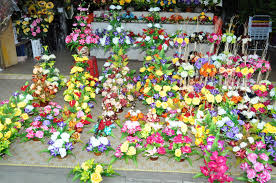
BOOK
NOW
Ayer Hitam
simply means Black Water. A lively town, Ayer Hitam is
always bustling with passing vehicles and people who travels north
and south. This place is well known for its ceramic items such
as flower vases in an assortment of colours, photo
frames, jars, ashtrays, and other home decorative
items. Read More
|
 |
Batu Pahat
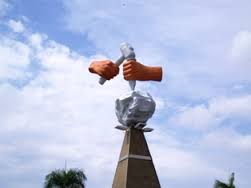
BOOK
NOW
Batu Pahat
means "chiselled rock" in the Malay language. The origin of
this name can be traced back to a legend in the 15th century; when
the invading
Siamese troops, led by Admiral Awi Di Chu were
chiselling rocks at a rocky spot in the coastal
village of Kampung Minyak Beku, in hope of getting
......
Read More
|
 |
Desaru
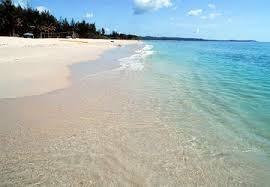
BOOK
NOW
Desaru
is a beach and resort area in Johor, Malaysia. It is
located approximately 88 kilometers east of Johor Bahru, on the
South China Sea. Desaru Fruit Farm is south of Desaru beach
and resort area. Desaru Ostrich Farm is located in teluk
Ramunia. It has more than 100 of ostriches.
Read More
|
 |
JPO
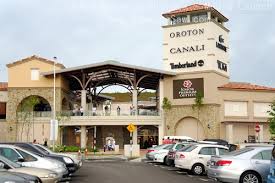
BOOK
NOW
Johor Premium
Outlets (JPO)
is a portfolio of outlet shopping centers located in
Kulaijaya District in Iskandar Johor in the state of
Johor, Malaysia. JPO brings together the finest
brands in unique outdoor settings and offers
impressive savings of 25 to 65 percent every day.
Read More
|
 |
Waterfalls
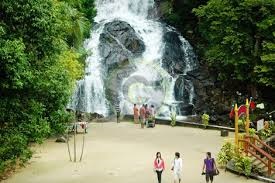
BOOK
NOW
Kota Tinggi
Waterfalls is a famous attraction
in Kota Tinggi, Johor, Malaysia.
The waterfalls are located in Lombong
at the foot of Gunung (Mountain) Muntahak. Early in the
morning, the mist shrouds the surrounding area with
a refreshing coolness from the healing negative ions
of the falls and natural music ...
Read More
|
 |
Kukup Island
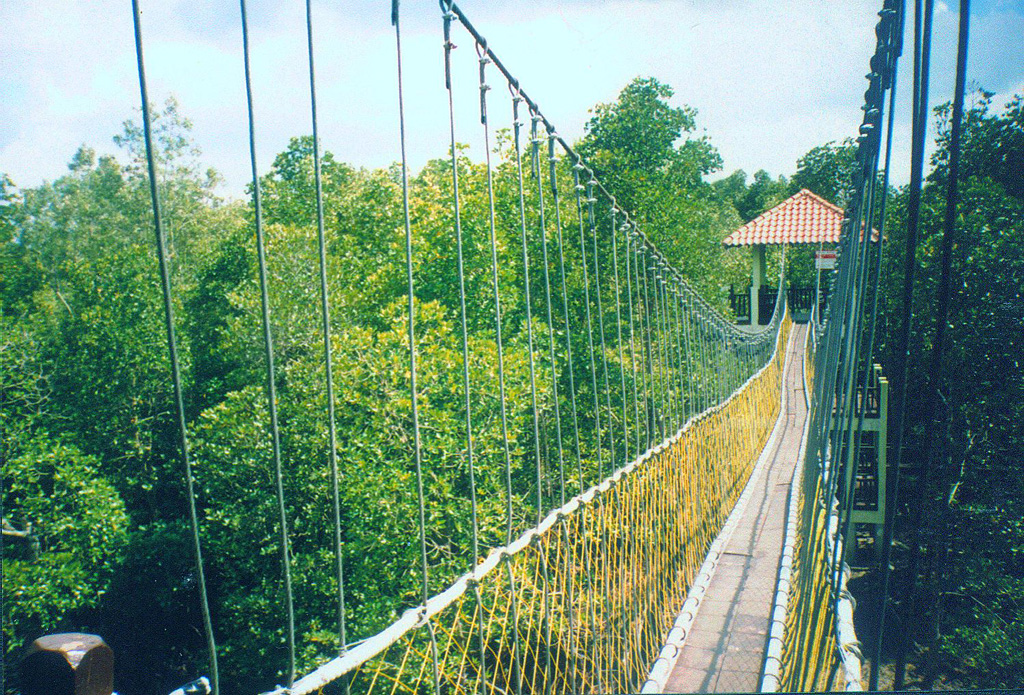
BOOK
NOW
Kukup Island (or Pulau
Kukup) is located at the southernmost part of Johor,
Malaysia. It is 1km off shore of the state Johor.
It is entirely covered by mangroves and mudflats.
In 1997, it became a national park under the Johor
State Park Corporation Enactment 1989 and later
recognized as a RAMSAR...
Read More
|
 |
Kukup Town
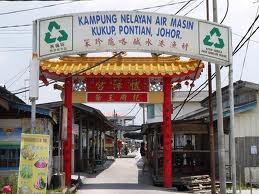
BOOK
NOW
Kukup
Town is center aroud the Kukup Jetty area in a small fishing
village known as Kukup Village which is located
about forty kilometres southwest of Johor Bahru, in
the district of Pontian, Johor, on the Strait of
Malacca in Malaysia. Over the years and due to
tourism and commercial active commercial...
Read More
|
 |
Legoland
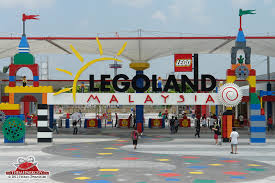
BOOK
NOW
Legoland Malaysia
is Malaysia's first international
theme park that has opened in
Nusajaya, Iskandar Johor, Malaysia on 15 September 2012 with over
40 interactive rides, shows and attractions. It is the first
Legoland theme park in
Asia and sixth in the world upon its
establishment. The official...
Read More
|
 |
Mersing
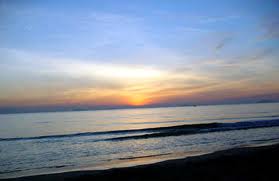
BOOK
NOW
Mersing
is a town in
Mersing District in the northeast corner of the
state of Johor, Malaysia. It is visited by
Malaysians and many foreign tourists from all over
the world on the way to the Tioman Island and
various island groups nearby. Mersing is very
well serviced by a wide range of restaurants, .......
Read More
|
 |
PPP
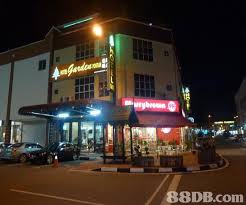
BOOK
NOW
Pusat Perdagangan Pontian (PPP) also
known as "Tambak" is a reclaimed land site in the heart of Pontian Town
in the District of Pontian,
Johor. It is Pontian's "Meldrum Walk of Johor
Bahru". It is a beautiful commercial center located
by the seaside and very spectacularly lighted at
night with.......
Read More
|
 |
Puteri Harbour
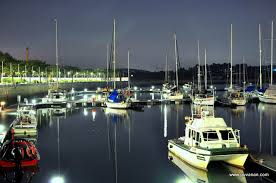
BOOK
NOW
Puteri Harbour
is the first marina in Malaysia being recognized and awarded with 5
Gold Anchor Award by The Yacht Harbour Association (TYHA). It
is located in Nusajaya near Kota Iskandar in Iskandar Johor in the state of Johor, and
a short distance to Hello Kitty Land and Legoland.
Read More
|
 |
Tanjung Piai
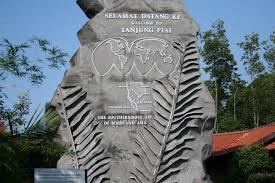
BOOK
NOW
Tanjung Piai
is a cape in Johor which is the southernmost point
of Peninsular Malaysia and thus the most southern
point of mainland Eurasia. The skyline of Singapore
is visible across the Johor Straits from the point.
It features seafood restaurants, perched on wooden
jetties that are surrounded
........ Read More
|
 |
Tropical Village
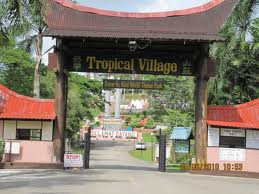
BOOK
NOW
Tropical Village is a notable
attraction in
Ayer Hitam,
Johor, Malaysia. It is located about 90 km
from
Johor Bahru. If you ever wonder what are the
world's famous structures, a trip to this unique
theme park quickly provides you with the answers.
The replicas of the structures are built within this
32 acres....... Read More
|
 |
UK Farm
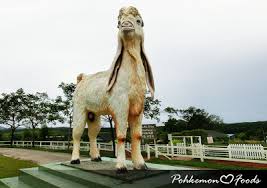
BOOK
NOW
UK Farm Agro
Resort
is a farm cum agriculture resort located in
the Kluang District and only a few kilometers
east of Ayer Hitam town in the state of Johor. It has the
reputation of being Malaysia's largest goat and sheep farm with 100
acres of grazing land for 4000 sheep. It is a .......
Read More
|
 |
Zenxin
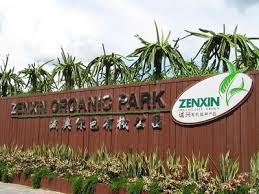
BOOK
NOW
Zenxin Organic
Park
is the first open-to public organic farm in
Malaysia, combining the educational and recreational purposes.
Visitors can choose to explore the farm on their own, on foot or by
bicycle. Tour guides are available to assist visitors to
experience real country life, enjoy fresh ...
Read More
|
 |
Rina Balinese
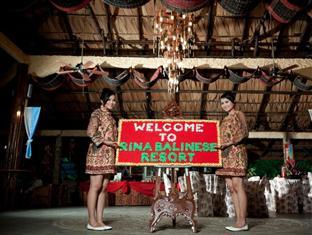
BOOK
NOW
Rina
Balinese Resort is a Nature SPA –
Eco-Tourism sanctuary located in a tranquil
agricultural fruit orchard in Seelong Jaya village in Senai (approximately 3 acres land) about 30 minutes drive from the busy
city of Johor Bahru. It is a Nature SPA ecotourism in
Iskandar Johor. The resort is solely owned & managed by Rina Nature SPA &
Recreation S/B incorporated on ....... Read More
|
 |
Forest City
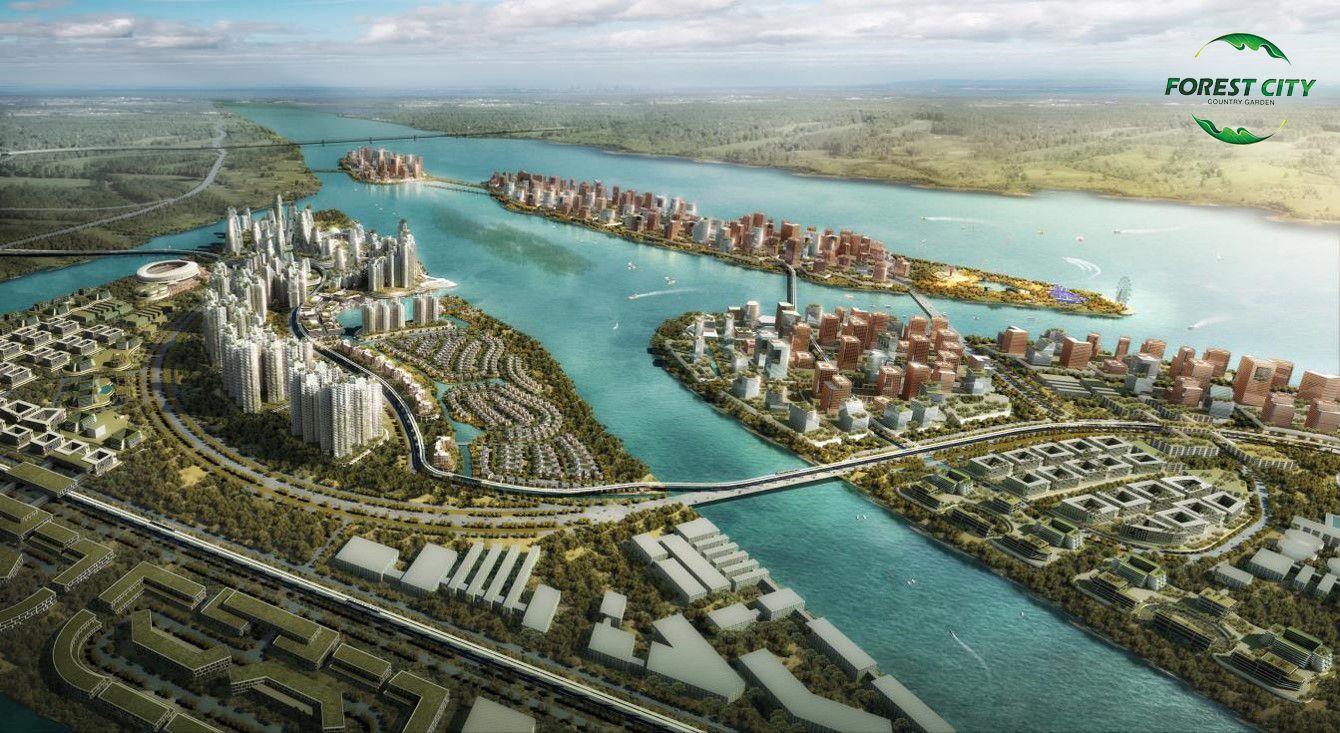
BOOK
NOW
Forest City
consists of four man-made islands
in Gelang Patah, Iskandar Johor just next to the
second largest Mangrove wetland in the world where
the southernmost tip (Tanjung Piai) of mainland Asia
(Eurasia) is located. It has a total land area of
1,386ha - about three times the size of Singapore
.......
Read More
|
 |
Melaka City
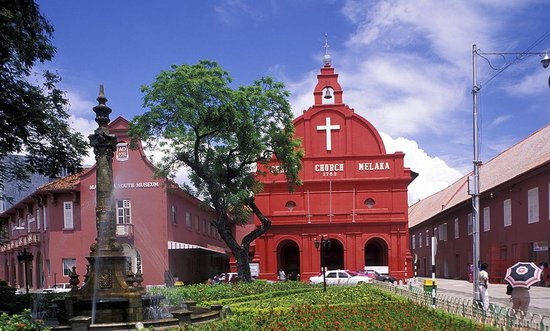
BOOK
NOW
Melaka City
(Malacca City) is
located in the District
of Melaka, an important historic city of Malaysia.
As of 2010 it has a population of 484,885. It is the oldest Malaysian
city on the Straits of Malacca, having become a successful entrepôt in
the era of the Malacca Sultanate. .......
Read More
|

Copyright © 2014-2020 Fourthway ManHo
Center. All Rights Reserved |
|
|